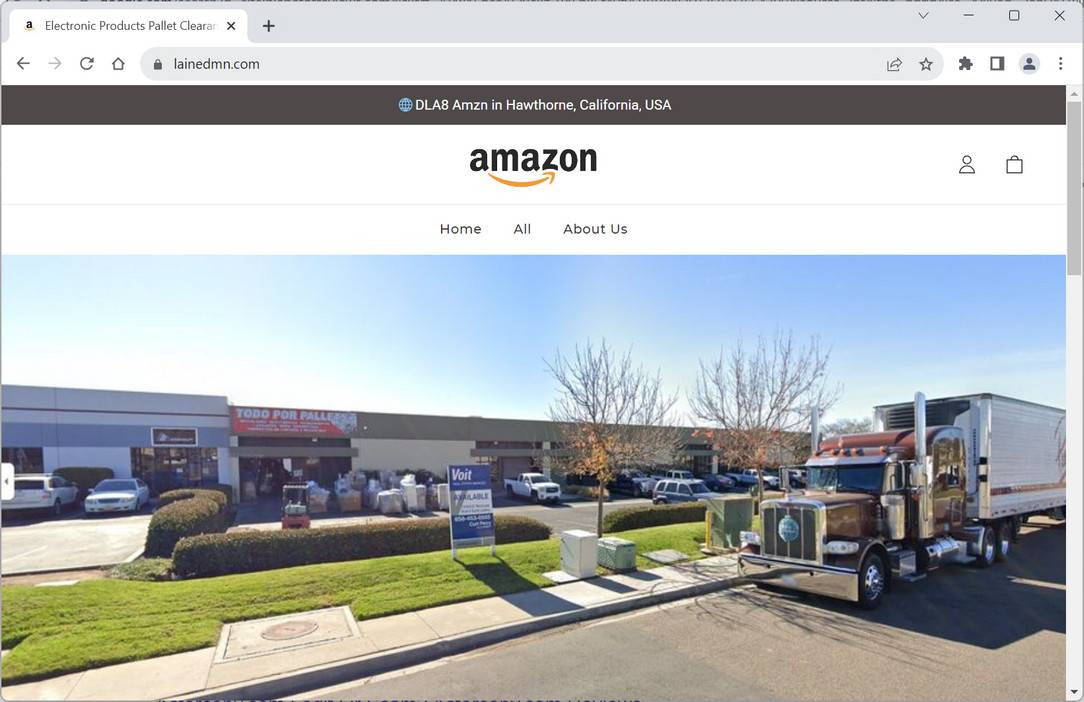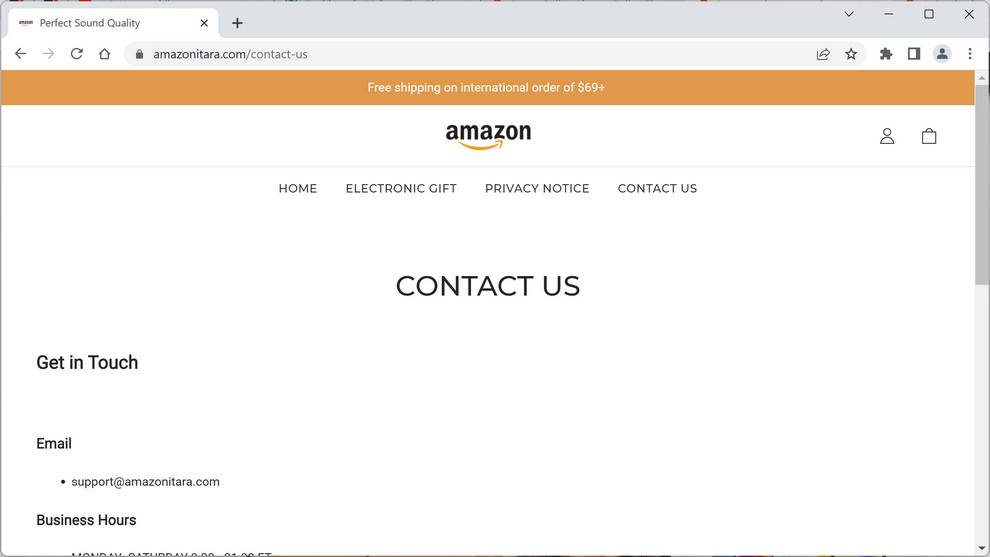A prevalent scam on social media is promoting alluring mystery boxes from Amazon at unbelievable prices. However, this is a fraudulent scheme aimed at stealing victims’ money and information. This article will take an in-depth look at how the Amazon mystery box scam works and provide tips on avoiding it.
This Article Contains:
Scam Overview
This scam operates by running enticing ads on platforms like Facebook, TikTok, and Instagram promoting mystery boxes from Amazon at incredible bargain prices. The ads tout these mystery boxes as part of an “Amazon Inventory Promotion” or “Amazon Clearance Sale.”
The boxes are offered at eye-catching prices like $20 or $30 and guaranteed to contain expensive tech products like drones, phones, laptops, and more. Victims are lured to fake websites impersonating Amazon to purchase the mystery boxes by entering personal and payment information.
However, it’s simply a scam to steal money and data. The websites have no actual relation to Amazon – they are fraudulent fronts stealing victims’ details. After payment, victims receive nothing or cheap, worthless products much different than advertised.
The Amazon mystery box scam exhibits typical red flags:
- Absurdly low prices like $20 for a box supposedly containing a $500 drone.
- Claims of containing big brands like Apple, Samsung, Sony but selling at 90%+ discounts.
- Fake limited-time deals to create false urgency.
- Amateur site designs with stolen logos and images.
- Lack of company information or contact details.
- Pressure to pay quickly before the “sale” ends.
By recognizing these and other signs, consumers can hopefully avoid being deceived and ripped off by this prevalent social media scam. Caution and awareness when evaluating deals online are your best protections.
How the Scam Works
The Amazon mystery box scam ensnares victims using deceptive social media ads and convincing fake websites. Here is an inside look at their deceitful tactics:
1. Bait: Flashy Social Media Ads
The scam starts with enticing video or image ads run on platforms like Facebook, TikTok, and Instagram. For example:
“Aligator Man Amazon Inventory Promotion. 2023 Super Value Mystery Box. Get Your Mystery package for only RM99! Included Drones, Smart Watches, Gamepad, Mobile Phones, Notebooks, Headsets or Anything. SUNNYANDTHOROUGH.COM. 2023 Super Value-⭐Large Electronics Packaging Box- Electronic Mystery💓If you miss it this time, you’ll have to wait until next year!”
The ads tout mystery boxes stuffed with expensive tech and electronics sold at unbelievable prices like $20. Crafty names like “Aligator Man” and “Super Value” imply Amazon affiliation. Countdown timers, limited stock claims, and other pressure tactics create urgency to purchase quickly.
While the polished, professional ads look credible, they are completely fabricated. Their goal is driving traffic to fake websites to execute the actual scam.
2. Hook: Elaborate Fake Websites
Clicking these social media ads leads to sophisticated fake websites designed to deceive. The sites resemble real ecommerce stores with logos, images, and branding stolen from Amazon.
They continue touting the mystery boxes having drones, laptops, and other premium products at hard-to-believe prices. Fake reviews and policies like free returns build trust. Countdown timers showing the “sale” expiring imminently pressure visitors to purchase fast.
In reality, these sites have zero connection to Amazon. They are fraudulent storefronts impersonating Amazon to execute their scam.
3. Reel-In: Collecting Personal and Payment Information
To purchase the mystery box, victims are directed to checkout where they must enter a range of personal and payment details including full name, address, credit card number, CVV code, etc.
The sites claim this is to process orders, calculate shipping costs, and finalize the incredible deal. But in reality, it’s just a scheme to harvest users’ sensitive information. Victims are unknowingly giving their details directly to scammers.
4. The Catch: Stolen Money and Information
After submitting information and payment, victims receive nothing but stress and frustration. The perpetrators behind the fake sites vanish with victims’ money and details in hand.
At best, credit card information gets sold on the dark web. At worst, scammers steal identities or drain bank accounts. Some victims eventually receive cheap $1 items that in no way match the advertised mystery boxes just so scammers can claim they fulfilled orders.
The reality is – the mystery box deals promoted in the flashy ads do not exist. Their only purpose is deceiving social media users into surrendering money and data to fraudsters impersonating Amazon.
What to Do If You Are a Victim
Falling victim to online shopping scams can lead to serious financial and identity theft damages. Here are important actions to take if you suspect you were duped by the Amazon mystery box scam:
Contact Your Credit Card Provider Immediately
If you entered your credit card information, call your provider right away to report fraudulent charges. Alert them your card details were stolen via a scam website impersonating Amazon. Request a new card number be issued to prevent additional fraud.
Ask the provider to reverse any pending or recent charges from the scam merchants. Acting quickly can limit damages. Monitor your statements closely for the next few months.
Freeze Credit Reports
Contact Equifax, Experian and TransUnion to place a credit freeze on your reports. This blocks scammers who stole your info from opening unauthorized accounts. Temporarily lift the freeze only when legitimately applying for credit.
Reset Online Account Passwords
Change the passwords on all your online accounts in case the scam site also obtained passwords or email addresses. Use unique, complex passwords for each account and turn on two-factor authentication when possible.
Be Wary of Future Scams
Use your experience as motivation to be even more discerning and vigilant against scams moving forward. Learn to recognize the warning signs like unbelievable prices, grammar errors, fake reviews, and pressure to pay quickly. Only shop on the real verified sites of retailers you know and trust.
Frequently Asked Questions about the Amazon Mystery Box Scam
What is the Amazon Super Value Mystery Box scam?
This scam runs ads on social media promoting mystery boxes from Amazon at unbelievable prices (like $20) supposedly containing expensive electronics. The ads link to fake sites impersonating Amazon to steal victims’ money and information.
What are some telltale signs that this is a scam?
Red flags include too-good-to-be-true low prices, claims of containing high-value products, fake limited time deals, amateur site designs, no company details, pressure to purchase quickly, etc.
How do scammers fool people with this scam?
They use compelling social media ads to drive traffic to sophisticated fake sites mimicking Amazon’s real website. Victims think they are ordering from Amazon when entering personal and payment details.
What happens after someone provides their information?
Victims never receive any mystery boxes after entering their details. Instead, their card information gets stolen to make fraudulent purchases, or their identity gets stolen. The scammers disappear with victims’ details and money.
What should you do if you already entered your information?
Immediately contact your credit card company to report fraudulent charges, cancel your current card, and have a new one issued. Also freeze your credit reports, reset account passwords, and monitor your statements closely for any suspicious activity.
How can this Amazon scam be avoided?
Look for the warning signs, research unfamiliar sellers thoroughly, avoid too-good-to-be-true deals, only purchase from Amazon’s real verified website, and never enter payment information on an unknown site.
Can these scam ads be reported?
Yes, you should report any suspicious ads to the social media platforms they appear on. On Facebook, click the three dots icon in the ad to submit a scam report. Reporting helps get scams removed.
Conclusion
The Amazon Super Value Mystery Box scam sweeping social media offers an important lesson about the prevalence of elaborate frauds online. If a deal seems too good to be true, it almost always is.
Use common sense when evaluating offers online. Research unfamiliar sellers thoroughly before providing any sensitive information. And never enter payment details unless you are on the legitimate site of a known retailer – double check the URL matches exactly.
With vigilance and awareness, consumers have the power to recognize scams and protect their hard-earned money. Report suspicious ads or activity so others don’t fall victim. Stay informed, stay cautious, and don’t let scammers take advantage of you.













